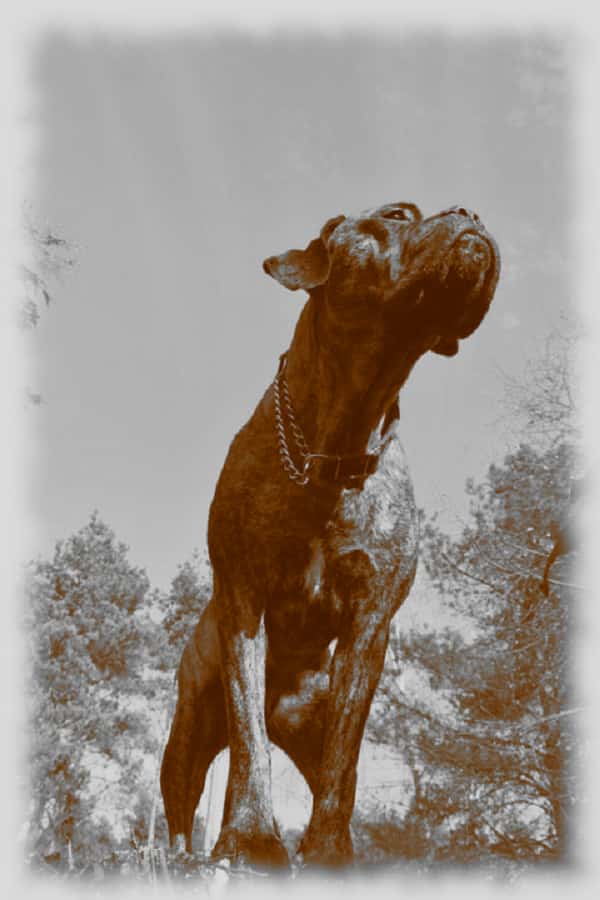CANE CORSO
Also Know as:
Italian Mastiff, Cane Di Macellaio, Cane Corz
.
Origin: Italy
Type: Pure Breed
Height: 23 to 27 inches
Weight: 88 to 110 pounds
Life Expectancy: 10 to 11 years
CANE CORSO TEMPERAMENT
A naturally aggressive and intelligent breed, the Cane Corso is a dog that needs proper socialization if possible from an early age. Their ancestors were known to be fighters and guard dogs, never backing down from a fight.
They are natural protectors and bond deeply with their household members which means they would look out for anybody in their household, making them somewhat good with children, but children must be thought how to behave properly around them. A word of caution is never to leave them around children without supervision.
When properly trained, they look very reserved and almost polite even to strangers
.
CANE CORSO PHYSICAL APPEARANCE
The Cane Corso has a short, coarse coat, their ears naturally dropping forward, although most breeders like to crop them short, having them close to their heads. They are large dogs with an athletic look.
In size, the male weighs between 99 to 110 pounds and the female between 88 to 99 pounds. In height, the male can reach between 24 to 27 inches with the female between 23 to 25 inches.
CANE CORSO CHARACTERISTICS
CANE CORSO CARE

CANE CORSO HISTORY

Originally called molossus dogs or mollosers, which came from the Greek work Molossi. The myth behind them was that they descended from big-boned, giant dogs of the gods.
The historical origin is that the Cane Corso originated from Italy. At the height of the Roman empire, after the Roman legions had dominated the Greek Islands, they brought these dogs to Italy and started breeding them there.
Their main purpose then was being war dogs, where they had hot buckets of oil strapped to their backs and allowed to charge on their enemies. Being intelligent dogs, they ended up pouring the hot oil on the enemy before ferociously attacking them.
Later on, they were used for bull-baiting, dog fights, gambling, etc. The more tamed ones at the time were geared towards hunting.
When the western empire came to an end, around 500 AD, these ferocious dogs slowly started going out of use. To preserve them and make them tamer for their times, some were crossbred with the Neapolitan Mastiff to preserve the line. These breeds were used then mainly as hunting dogs, then as time progressed they were used for livestock droving and guard dogs for farmsteads and henhouses.
As time went on the Italian region became a troubled region, political issues, invasions, economic problems, etc. the area became less viable and the priorities of most people shifted to just survival, as the 18th, 19th, and 20th century started unfolding, mechanized farming became a thing leading to the Cane Corsi losing more value in terms of usability.
By the mid 20th century, the breed was nearly extinct, it took a group of breeders in Italy to come together and revive the breed. This started in the 1970s, by 1983 the Society Amorati Cane Corso (Society of Cane Corso Lovers) was formed. Ten years later, the Cane Corsi was exhibited in European dog’s shows. Five years later the Cane Corsi was imported into America, and the AKC finally acknowledged the breed in 2010.

Hi, I am Charles Nwankwo Editor-in-Chief, Mydoggything.com. Gleaning from Professional Dog Trainers, behaviorist, Registered Veterinarians, and Breeders. We are passionate about making dog care easy for you. My job is to make sure that you get the best-updated dog care information to understand and take care of your dog or dogs.







